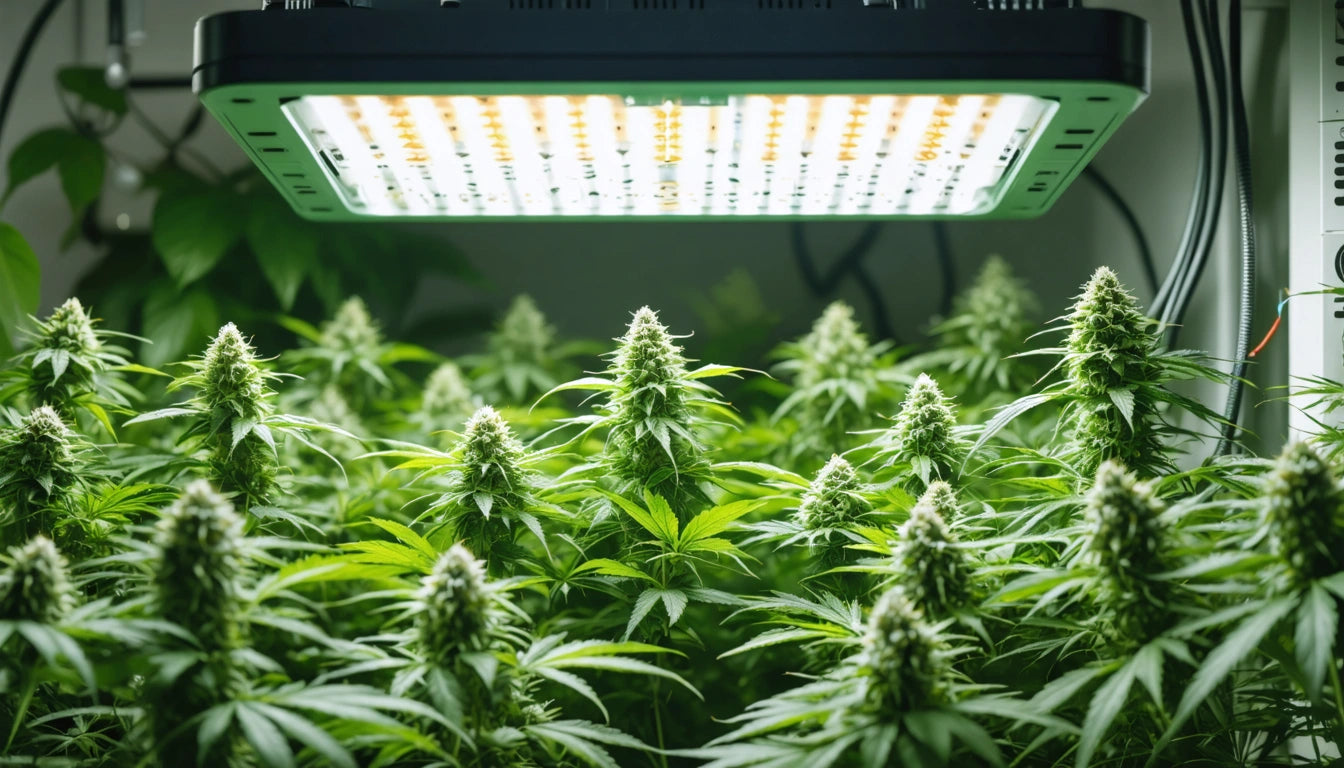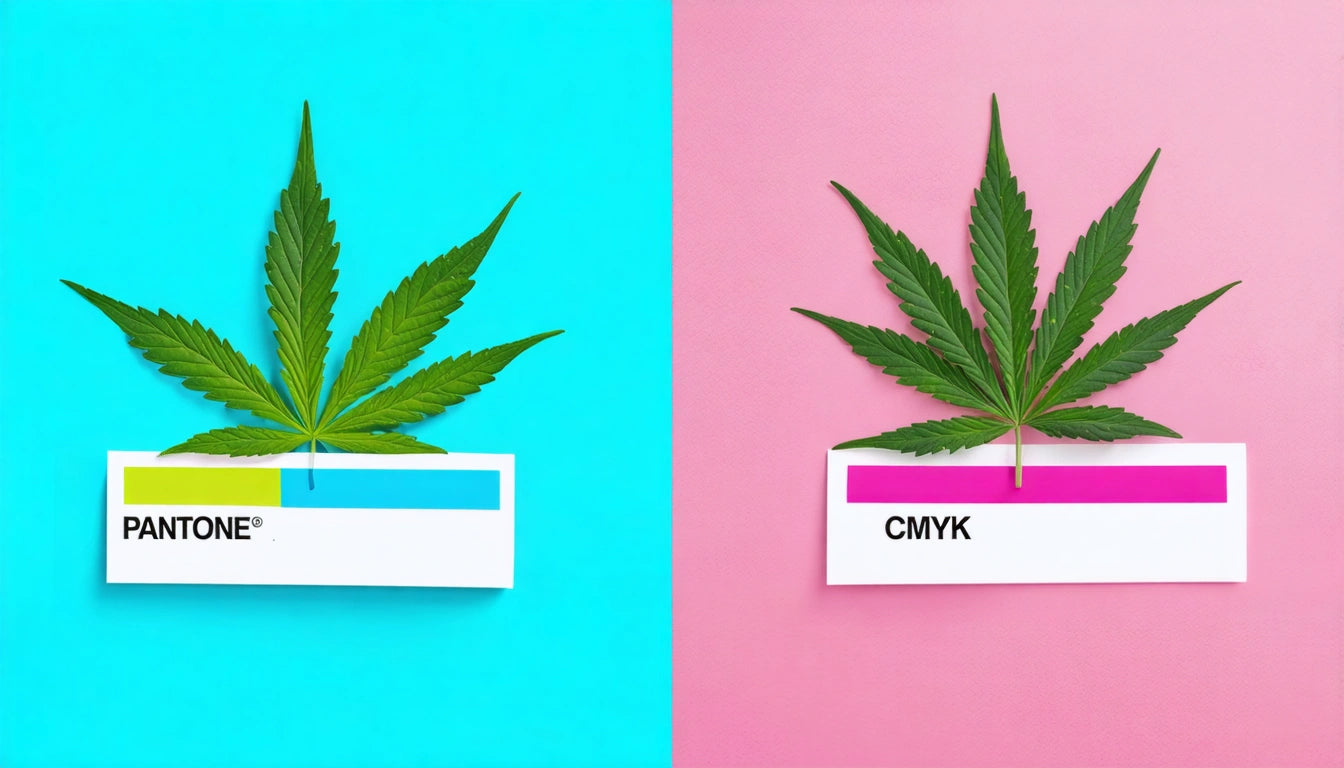Table of Contents
LED Grow Lights vs. HPS: Comparing the Best Options for Your Indoor Garden
Choosing between LED grow lights vs HPS systems represents one of the most significant decisions for indoor cannabis cultivators. Each technology offers distinct advantages in terms of efficiency, spectrum quality, heat output, and cost structure. Understanding these differences helps growers optimize their environment for maximum yield and quality.
Understanding Grow Light Technologies
High-Pressure Sodium (HPS) lights have dominated the indoor growing industry for decades. These fixtures belong to the High-Intensity Discharge (HID) family and produce light by creating an arc between tungsten electrodes in a pressurized tube containing sodium and mercury. The resulting light skews toward the yellow-orange-red spectrum, mimicking autumn sunlight.
LED (Light Emitting Diode) technology represents a newer approach to horticultural lighting. These fixtures use semiconductors to convert electricity directly into light, allowing for precise wavelength targeting and significantly improved efficiency. Modern LED grow lights for cannabis cultivation can be programmed or designed to emit specific light spectrums optimized for different growth stages.
Efficiency and Power Consumption
When comparing hps lights vs led for efficiency, LEDs have a clear advantage. LEDs convert approximately 40-60% of energy into usable light, while HPS fixtures typically achieve only 25-30% efficiency. This difference translates to significant savings on electricity bills over time.
A typical comparison shows:
- 600W HPS system consumes approximately 660W with ballast
- Equivalent LED system might draw only 300-400W for similar plant coverage
Understanding electricity usage and costs becomes essential when scaling operations. Many commercial growers find that the switch to LED can reduce power consumption by 30-50% while maintaining or even improving yields.
Heat Management Considerations
Heat management represents another crucial difference when evaluating led or hps grow lights. HPS systems generate significant heat, with approximately 70-75% of energy converted to infrared radiation rather than visible light. This heat output requires robust ventilation systems and often necessitates additional cooling equipment in warmer climates.
LED fixtures produce substantially less heat and direct it upward rather than toward plants. This difference allows for:
- Closer placement to plant canopy without burning
- Reduced HVAC requirements and associated costs
- Better temperature control in the growing environment
- Lower water consumption as plants experience less heat stress
For growers in warmer climates or with limited ventilation options, LED systems often prove more practical despite higher initial costs. Proper safety measures and secure containment solutions become easier to implement with lower-heat lighting systems, especially in facilities where temperature control is critical.
Spectrum Quality and Plant Development
HPS Spectrum Characteristics
HPS lights produce a spectrum concentrated in the yellow-orange-red wavelengths (570-620nm), which supports flowering and fruiting stages effectively. However, they lack significant blue light output, which plants need during vegetative growth for compact, healthy development.
LED Spectrum Advantages
Modern LED systems can be engineered to provide:
- Full-spectrum light mimicking natural sunlight
- Adjustable spectrum options for different growth phases
- Enhanced blue light for vegetative growth
- Optimized red light for flowering
- Inclusion of UV and far-red wavelengths for terpene development
This spectral control represents one of the most significant advantages when comparing LED vs sodium lighting technologies. Many cultivators report improved terpene profiles and cannabinoid production under properly tuned LED spectrums.
Cost Analysis: Initial vs Long-Term
Understanding the total cost of ownership helps make an informed decision between led grow lights vs hps grow lights:
Initial Investment
- HPS System (600W): $150-300 including fixture, bulb, and ballast
- Equivalent LED System: $500-1,200 depending on quality and features
Operational Costs
- HPS bulbs require replacement every 10,000-24,000 hours ($50-100 per bulb)
- LED diodes typically last 50,000-100,000 hours before significant degradation
- HPS systems consume 40-50% more electricity than equivalent LED systems
- HVAC costs are typically higher with HPS due to heat management needs
For most growers, LED systems reach cost parity with HPS within 1-2 years of operation, after which they provide ongoing savings. The ultimate guide to grow lights can help cultivators calculate their specific return on investment timeline.
Best Applications for Each Light Type
When HPS May Be Preferable
- Budget-constrained operations with very low electricity costs
- Cold growing environments where additional heat benefits the grow space
- Short-term or temporary growing operations
- Situations where initial investment must be minimized
When LED Excels
- Long-term commercial operations focused on ROI
- Areas with high electricity costs
- Warm climates where heat management is challenging
- Precision growing requiring spectral control
- Operations prioritizing sustainability and reduced carbon footprint
Understanding LED grow light usage and safety considerations helps maximize the benefits of this technology while ensuring proper implementation.
Making the Right Choice for Your Grow
When deciding between led vs hps for your indoor garden, consider these factors:
- Growing space size and configuration
- Local electricity costs and availability
- Climate and temperature management capabilities
- Budget constraints, both short and long-term
- Desired level of control over the growing environment
- Sustainability goals and environmental impact concerns
Many experienced growers find that a hybrid approach works well during transition periods, using LED fixtures for vegetative growth where spectrum control matters most, while maintaining HPS for flowering until a complete LED conversion becomes financially feasible.
As technology continues to advance, the gap between LED and HPS performance widens, with LED innovations consistently improving efficiency, spectrum quality, and overall value. For most modern cannabis cultivators, LED systems represent not just the future of indoor growing but increasingly the most practical present-day solution.











Leave a comment
All comments are moderated before being published.
This site is protected by hCaptcha and the hCaptcha Privacy Policy and Terms of Service apply.